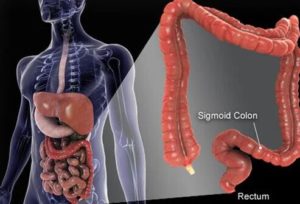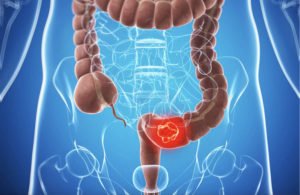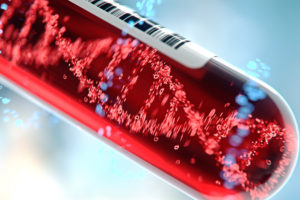Colorectal Cancer Plasma & Serum Samples
Bay Biosciences provides high-quality, fresh frozen biopsy tissue samples. FFPE tissue blocks with matched fresh frozen sera (serum), plasma, and peripheral blood mononuclear cells (PBMC) bio-fluids from patients diagnosed with colorectal cancer.
The sera (serum), plasma and PBMC biofluid specimens are processed from colorectal cancer patient’s peripheral whole-blood using customized collection and processing protocols.
Fresh frozen tissue and matched biofluid samples are collected from unique patients diagnosed with colorectal cancer.
Bio-samples are provided to a valued pharmaceutical customer for research, diagnostics, discovery and drug development.

Colorectal Cancer (CRC) Overview
Colorectal cancer, also known as bowel cancer, colon cancer, or rectal cancer, is any cancer that develops in the colon and rectum. In this type of cancer a malignant tumor arises from the inner wall of the large intestine, colon or rectum.
CRC often begins as a growth called a polyp inside the colon or rectum. Finding and removing polyps can prevent colorectal cancer.
The incidence of colorectal cancer is more common in developed countries, however it is also more likely to affect people in developing countries.
It is estimated that over the next two decades the number of CRC cases will increase dramatically, from 1.2 to 2.2 million worldwide, with most of the increase (62%) in the developing countries.
According to the American cancer society (ACS) colorectal cancer is the third most common cancer in the United States and the second leading cause of cancer-related deaths.
ACS expects to see around 150,000 new cases of colorectal cancer for both sexes combined, this year in the United States.
Approximately 5% of all CRC are attributed to two inherited syndromes, Familial Adenomatous Polyposis, and Lynch syndrome.
Signs and symptoms of Colorectal Cancer (CRC)
Colorectal cancer may not cause any symptoms in its early stages when the cancer is small. Signs and symptoms often appear once a tumor has grown or spread into surrounding tissues or organs.
Some of the symptoms can be similar to those of many other health conditions.
Following are the signs and symptoms of colorectal cancer:
- Abdominal Pain
- Anemia
- A lump in the abdomen or rectum
- Bloating
- Blood in stools
- Black stools
- Bowel obstruction
- Bowel perforation
- Changes in bowel habits
- Constipation
- Diarrhea
- Fatigue
- Feeling of not being empty after a bowel movement
- Nausea
- Rectal bleeding
- Rectal pain and pressure
- Reduced appetite
- Unexplained Weight Loss
- Vomiting
- Weakness
If a doctor finds signs of anemia during a routine medical check, they may suggest screening for colorectal cancer. Others receive the diagnosis after routine screening. About 40% of patients with this type of cancer receive the diagnosis when the disease is in an early stage.
Stages of Colorectal Cancer (CRC)
The stage of cancer refers to how far it has spread. Determining the stage helps doctors chose the most appropriate treatment.
Following are different stages of colorectal cancer:
- Stage-0: This is the earliest stage, also known as carcinoma in situ, when the cancer is only in the inner layer of the colon or rectum.
- Stage-1: The cancer has grown through the inner layer of the colon or rectum but has not spread beyond the wall of the rectum or colon.
- Stage-2: The cancer has grown through or into the wall of the colon or rectum but has not yet reached nearby lymph nodes.
- Stage-3: The cancer has reached nearby lymph nodes but not other parts of the body.
- Stage-4: The cancer is present in other parts of the body, such as the liver or lungs.
Sometimes, treatment eliminates the cancer, but it comes back in the same area or another part of the body. This is called recurrent cancer.

Causes of Colorectal Cancer (CRC)
Researchers are not sure what causes most colon cancers.
In general, colon cancer begins when healthy cells in the colon develop changes (mutations) in their DNA. A cell’s DNA contains a set of instructions that tell a cell what to do.
Healthy cells grow and divide in an orderly way to keep your body functioning normally. But when a cell’s DNA is damaged and becomes cancerous, cells continue to divide even when new cells aren’t needed. As the cells accumulate, they form a tumor.
With time, the cancer cells can grow to invade and destroy normal tissue nearby. And cancerous cells can travel to other parts of the body to form deposits there (metastasis).
Risk Factors of Colorectal Cancer (CRC)
It is not clear exactly why colorectal cancer occurs. Most cases probably result from a combination of environmental and genetic factors.
About 70% of CRC cases happen for no clear reason, while 10% appear to be inherited and 20% happen in family clusters.
Following factors may increase the risk of developing colon cancer:
- Older Age: Colorectal cancer can be diagnosed at any age, but a majority of patients with colorectal cancer are older than 50. The rates of colorectal cancer in people younger than 50 have been increasing.
- African-American Race: African-Americans have a greater risk greater risk of developing colorectal cancer than do people of other races. According to the ACS he chance of a Black person having this type of cancer is at least 20% higher than the chance of a white person having it, and the fatality rate is 40% higher for Black patients.
- Gay Men: According to the National LGBT Cancer Network studies have shown that gay men are at increased risk for several types of cancers, including colorectal cancer. The risk of dying
risk of dying from colorectal and other types of cancer may be higher for gay men due to challenges in accessing appropriate healthcare.
- A personal history of colorectal cancer or polyps: If you’ve already had colon cancer or noncancerous colon polyps, you have a greater risk of colorectal cancer in the future.
- Inflammatory intestinal conditions: Chronic inflammatory diseases of the colon, such as ulcerative colitis and Crohn’s disease, can increase the risk of colon cancer.
- Inherited syndromes that increase colon cancer risk: Some gene mutations passed through generations of the family can increase risk of developing colon cancer significantly. Only a small percentage of colon cancers are linked to inherited genes.The most common inherited syndromes that increase colon cancer risk are familial adenomatous polyposis (FAP) and Lynch syndrome, which is also known as hereditary nonpolyposis colorectal cancer (HNPCC).
- Family history of colorectal cancer: A person is more likely to develop colon cancer if they have a blood relative who has had the disease. If more than one family member has colon cancer or rectal cancer, your risk is even greater.
- Low-fiber, high-fat diet: Colorectal cancer and rectal cancer may be associated with a typical Western diet, which is low in fiber and high in fat and calories. Some studies have found an increased risk of colon cancer in people who eat diets high in red meat and processed meat.
- A sedentary lifestyle: People who are inactive are more likely to develop colon cancer. Getting regular physical activity may reduce the risk of colon cancer.
- Diabetes:: Patients with diabetes or insulin resistance have an increased risk of colon cancer.
- Obesity: Patients who are obese have an increased risk of colorectal cancer and an increased risk of dying of colon cancer when compared with people considered normal weight.
- Smoking: People who smoke may have an increased risk of colon cancer.
- Alcohol: Heavy use of alcohol increases the risk of developing colon cancer.
- Radiation therapy for cancer. Radiation therapy directed at the abdomen to treat previous cancers increases the risk of colon cancer.
Diagnosis of Colorectal Cancer (CRC)
Screening
Screening can detect polyps before they become cancerous. It can also detect colon cancer in the early stages, when it is easier to treat.
In 80% of the cases, a doctor diagnoses colorectal cancer after performing a colonoscopy because the person has symptoms.
Routine screening detects 11% of cases, and 7% of people with colorectal cancer receive a diagnosis after seeking emergency care for sudden abdominal symptoms.
Following are the common screening and diagnostics procedures used for colorectal cancer:
Colonoscopy
Colonoscopy is the gold standard diagnostic tool for colorectal cancer. It has a high level of accuracy and can show precisely where a tumor is.
The procedure involves using a long, thin, flexible tool called a colonoscope that contains a light and a camera. It allows the doctor to see the whole colon and rectum. They may also remove polyps or take tissue for a biopsy during the procedure.
A colonoscopy is painless, but some people take a mild sedative to help them stay calm. Beforehand, a person may need to drink a laxative fluid to clean out their colon. Bleeding and perforation of the colon wall are rare but possible complications.
Stool Tests
Your doctor may recommend tests to check for blood in your stool. Blood in the stool is not always visible to the eye. These tests help detect blood that cannot be seen.
A fecal immunohistochemistry test checks for hidden blood in the lower colon, which include an FOBT or FIT, are performed at home using a kit provided. The kit allows you to collect one to three samples of your stool for analysis.
Stool DNA Test
This test checks for several DNA markers that colon cancers or precancerous polyps shed into stool. A person collects an entire bowel movement at home for testing in a lab. If the result is positive, a colonoscopy is necessary. This type of test may not detect every DNA marker of cancer.
Blood Tests
Blood tests may be ordered to check for signs of colorectal cancer, such as anemia, which occurs when you have too few red blood cells.
Your doctor may also order liver function tests (LFT) and tests to look for tumor markers, such as carcinoembryonic antigen (CEA) and CA 19-9. Blood tests alone cannot diagnose colorectal cancer.
Flexible Sigmoidoscopy
This procedure involves using a sigmoido-scope, a flexible, thin, lighted tube, to examine the rectum and sigmoid colon which is the last part of the colon before the rectum.
The test takes a few minutes and is not painful, but it might be uncomfortable. There is a small risk of perforating the colon’s wall.
Barium Enema X-ray
Barium is a contrast dye that can reveal any unusual features on an X-ray. A doctor injects it into the bowel as an enema. A doctor may recommend a colonoscopy for closer investigation following a barium enema X-ray.
CT Colonography
This produces images of the colon. It is less invasive than a colonoscopy, but if it reveals a mass, the person will need a colonoscopy.
Imaging Tests
MRI, CT scan or ultrasound can show if the cancer has spread (metastasize) to another part of the body.
Imaging tests can be used to:
- View suspicious areas that might be cancer
- Check how far cancer has spread
- Check if treatment is working
Imaging tests that may be used to help diagnose colorectal cancer include:
- Abdominal ultrasound
- CT scan
- Chest X-ray
- Endorectal ultrasound
- Magnetic resonance imaging (MRI)
- PET/CT scan
- Positron emission tomography (PET) scan
Proctoscopy
A proctoscopy involves inserting a proctoscope through the anus. A proctoscope is a thin, rigid tube with a camera on the end that’s used to view the inside of the rectum. It’s used to check for cancer in the rectum.
Biopsy
A biopsy is a lab test that examines a sample of tissue. Polyps or suspicious areas are usually removed during a colonoscopy, but they can also be removed during a surgical procedure if needed.
The biopsy tissue is sent to a lab where it’s examined under a microscope. If cancer is found, the samples may also be tested for gene changes. Other lab tests may be performed to help classify the cancer.
Treatment of Colorectal Cancer (CRC)
Treatment for colorectal cancer depends on:
- The cancer stage, size and location of the tumor
- Whether the cancer is recurrent
- Where the cancer has spread
- Patients overall health
Your doctors will discuss your treatment options, possible side effects, and the benefits of each treatment with you when creating your treatment plan.
COLORECTAL CANCER TREATMENT OPTIONS
One or a combination of the following treatments may be used to treat colorectal cancer:
- Ablation
- Chemotherapy
- Surgery
- Immunotherapy
- Palliative and end-of-life care
- Radiation therapy
- Targeted therapies such as anti-angiogenesis therapy, epidermal growth factor receptor (EGFR) inhibitors
- Vaccines
Ablation
Ablation involves using microwaves, radiofrequency, ethanol, or cryosurgery to destroy a tumor without removing it.
A surgeon delivers the therapy using a probe or needle guided by ultrasound or CT scans.
Chemotherapy
Chemotherapy drugs destroy cancerous cells throughout the body. Chemo drugs for colon or rectal cancer that are given into a vein (IV), this may help treat colon cancer or shrink a tumor before surgery. It can also help relieve symptoms in the later stages.
Chemo is given in cycles, followed by a rest period to give you time to recover from the effects of the drugs. Cycles are most often 2 or 3 weeks long.
This approach, however, can have widespread adverse effects, as it targets both cancerous and healthy cells.
Surgery
Surgery is the primary treatment for colorectal cancer that is limited to the colon. It aims to remove cancerous tissue, including tumors and nearby lymph nodes, and prevent the cancer from spreading.
The surgeon usually sews the bowel back together, but they may need to insert a stoma and colostomy bag for drainage. This is usually temporary.
Surgery may remove all traces of early stage cancer. In the later stages, surgery cannot stop the cancer from spreading, but removing a blockage can help ease any symptoms.
Immunotherapy
This drug treatment helps the body use its immune system to detect and eliminate cancerous cells. It may help some people with advanced colorectal cancer.
Possible adverse effects include an autoimmune reaction, in which the body mistakenly attacks its own cells.
Palliative and End-of-Life Care
If colorectal cancer spreads to organs beyond the colon, progressing to stage-IV, it is not possible to cure it. Other options may include:
- Counseling
- Surgery to remove a blockage
- Pain relief
- Radiation therapy or chemotherapy to reduce the size of tumors
- Treatment for side effects of medication
Radiation Therapy
Radiation therapy uses high-energy radiation beams to destroy cancerous cells and prevent them from multiplying.
A doctor may recommend it to help shrink a tumor before surgery for rectal cancer. They may also use it alongside chemotherapy, in an approach known as chemoradiation. It can have long and short-term adverse effects.
Targeted Therapy
This involves taking drugs that target specific proteins to slow or prevent the growth cancerous cells.
The adverse effects are usually less severe than those of chemotherapy because these drugs only target specific cells.
Vaccines
Researchers are hopeful that a vaccine to treat colorectal cancer will soon become available. Studies conclude that one vaccine, called Ad5-GUCY2C-PADRE, may help people with colorectal cancer that has not yet reached stage 3.

Bay Biosciences is a global leader in providing researchers with high quality, clinical grade, fully characterized human tissue samples, bio-specimens and human bio-fluid collections.
Samples available are cancer (tumor) tissue, cancer serum, cancer plasma cancer PBMC and human tissue samples from most other therapeutic areas and diseases.
Bay Biosciences maintains and manages its own bio-repository, human tissue bank (biobank) consisting of thousands of diseased samples (specimens) and from normal healthy donors available in all formats and types.
Our biobank procures and stores fully consented, deidentified and institutional review boards (IRB) approved human tissue samples and matched controls.
All our human tissue collections, human specimens and human bio-fluids are provided with detailed samples associated patient’s clinical data.
This critical patient’s clinical data includes information relating to their past and current disease, treatment history, lifestyle choices, biomarkers and genetic information.
Patient’s data is extremely valuable for researchers and is used to help identify new effective treatments (drug discovery & development) in oncology, other therapeutic areas and diseases.
Bay Biosciences banks wide variety of human tissue samples and biological samples including cryogenically preserved at – 80°C.
Including fresh frozen tissue samples, tumor tissue samples, FFPE’s, tissue slides, with matching human bio-fluids, whole blood and blood derived products such as serum, plasma and PBMC’s.
Bay Biosciences is a global leader in collecting and providing human tissue samples according to the researchers specified requirements and customized, tailor-made collection protocols.
Please contact us anytime to discuss your special research projects and customized human tissue sample requirements.
Bay Biosciences provides human tissue samples (human specimens) from diseased and normal healthy donors which includes:
- Peripheral whole-blood,
- Amniotic fluid
- Bronchoalveolar lavage fluid (BAL)
- Sputum
- Pleural effusion
- Cerebrospinal fluid (CSF)
- Serum (sera)
- Plasma
- Peripheral blood mononuclear cells (PBMC’s)
- Saliva
- Buffy coat
- Urine
- Stool samples
- Aqueous humor
- Vitreous humor
- Kidney stones (renal calculi)
- Other bodily fluids from most diseases including cancer.
We can also procure most human bio-specimens and can-do special collections and requests of human samples that are difficult to find. All our human tissue samples are procured through IRB approved clinical protocols and procedures.
In addition to the standard processing protocols Bay Biosciences can also provide human plasma, serum, PBMC bio-fluid samples using custom processing protocols, you can buy donor specific sample collections in higher volumes and specified sample aliquots from us.
Bay Biosciences also provides human samples from normal healthy donors, volunteers, for controls and clinical research, contact us Now.
日本のお客様は、ベイバイオサイエンスジャパンBay Biosciences Japanまたはhttp://baybiosciences-jp.com/contact/までご連絡ください。


